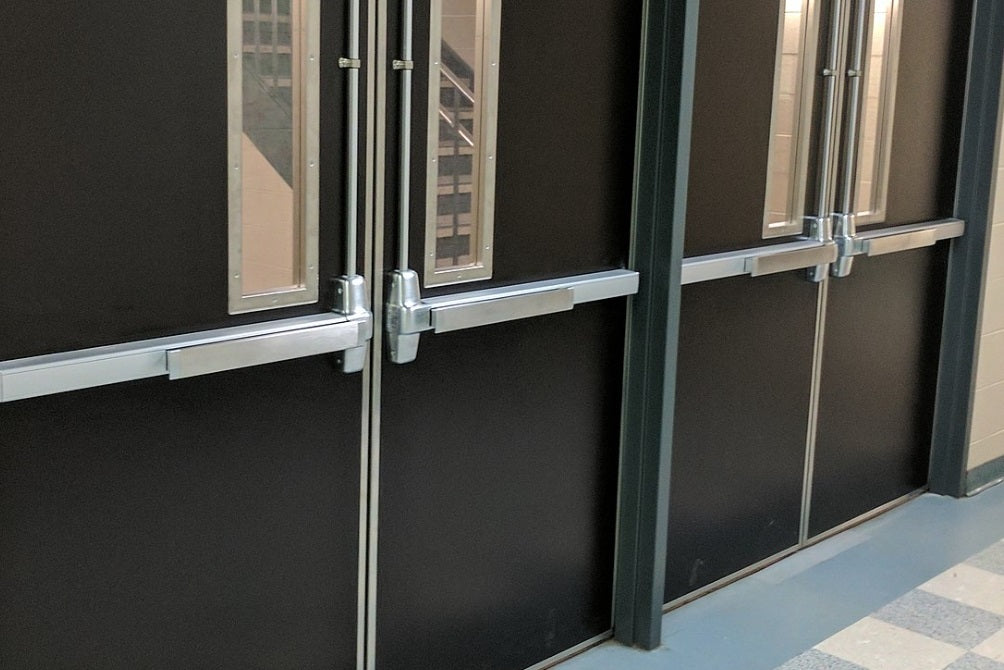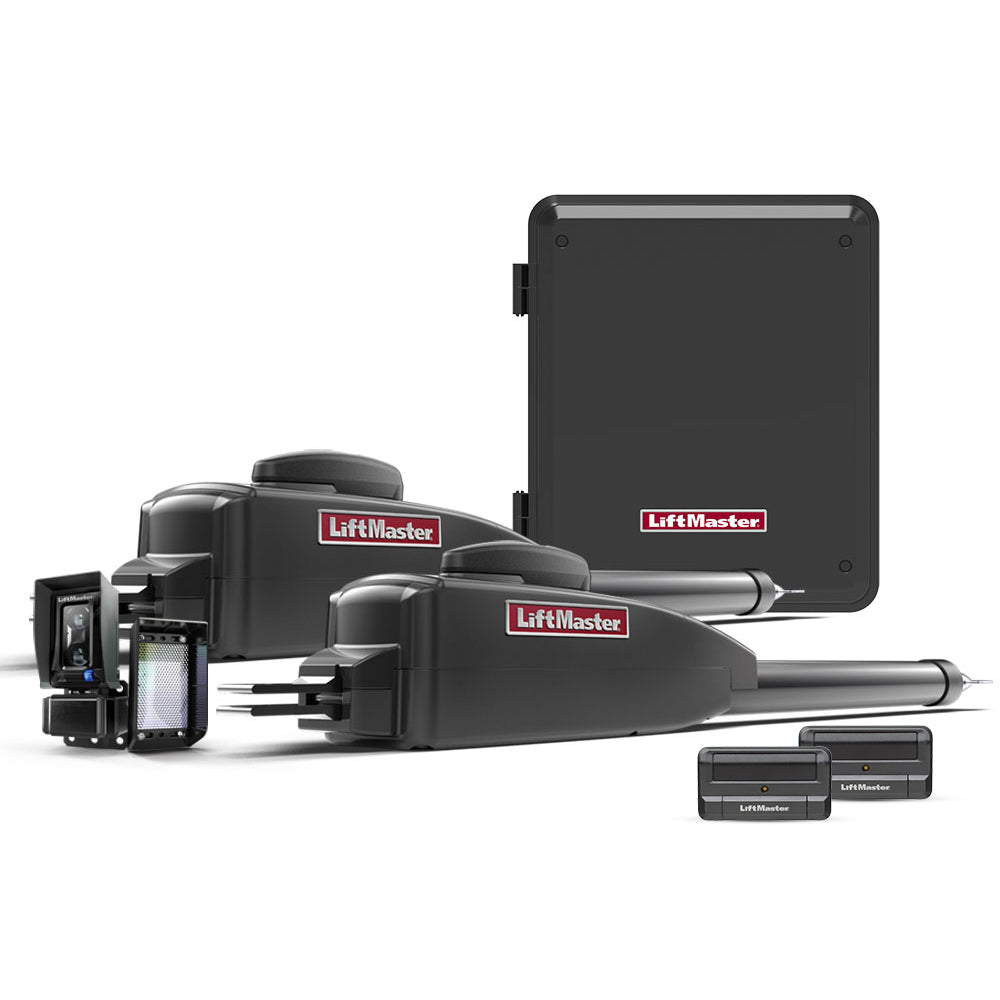When exit systems are properly planned and constructed, they can save lives during disasters and emergencies. Installing panic bar hardware in an emergency exit helps people easily exit the perimeter without difficulty.
An exit device such as panic bar hardware installed on an exit door gives people a sense of safety even before things start to happen. Even building code requirements require a commercial door exit to swing out conveniently in the direction of the building exit for places that hold 50 or more people.
What Is Panic Bar Hardware?
Panic bar hardware, otherwise known as an exit device, allows easy and fast exit to building occupants during emergencies and immediate evacuation scenarios.
Panic hardware is defined in code publications as “a door latching assembly incorporating a device that releases the latch upon the application of a force in the direction of egress travel.”
Building code requirements may include the installation of panic hardware, especially on commercial doors. However, local codes may differ in each area. It is best to check what the stipulations in your local codes are to ensure that you install the appropriate panic exit device.
How Does a Panic Bar Work?
The mechanism of a panic bar includes a spring-loaded metal bar horizontally fixed inside an egress-opening door. When the bar is pressed, it activates the mechanism and opens the door latch.
A panic bar is mostly installed on fire doors and other emergency exit doors to provide people a way to exit the building safely and conveniently. Due to its easy operation, it helps avoid crowds near the exit door and assists in the timely and organized evacuation of people within the vicinity.
Panic Bar Hardware Styles
To find the perfect panic bar for your needs, one must know the different styles and understand how each mechanism works.
Rim Exit Device
Rim type panic bars directly latch to the frame of the door where the device is attached. This is one of the sturdiest panic bar styles and is commonly used on many commercial doors. It can be installed on single or double doors with a mullion.
Mortise Lock Exit Device
A mortise lock exit device also provides a strong mechanism for panic bars. The latch is inside the door, making it hard to bypass during a security breach. It can also be used on single or double doors with a mullion, as well as in a double door with a vertical rod device.
Concealed Vertical Cable Exit Device
This style is best used for double doors under high traffic or places where bars are prone to vandalism and abuse. The concealed vertical cable exit device stays hidden and uses a cable instead of a metal rod for operation.
Concealed Vertical Rod Exit Device
A rod exit device should be used in high-traffic exits. Concealing the vertical rod also helps keep it safe from vandalism and abuse. The device is concealed inside the door, where it latches to the top of the door frame and floor.
Surface Vertical Rod Exit Device
This is a panic bar hardware style affixed to the surface of the door. It is very easy to install and great for high-traffic areas. Contrary to other exit devices, it does not latch to the side of the door. Instead, it latches to the top of the door frame for better convenience.
Three-Point Latching Exit Device
This type of panic bar hardware combines the rim and vertical rod styles. The device latches the door to the floor and also to the side and top of the door frame. This is more robust in nature and can be affixed to all types of single or double doors, including metal doors and wood doors.
Panic Hardware vs Fire Exit Hardware
Panic hardware is one type of exit device. However, it should never be confused with fire exit hardware. These two pieces of hardware are meant for emergencies but have different features that distinguish one from the other.
Panic hardware is an exit device meant for doors with exit or push bars that do not necessarily hold a fire rating. Panic hardware should be listed under UL 10C. The panic device is meant for its dogging feature that allows easy exit during untoward events.
Meanwhile, a fire exit door comes with fire rated door hardware that is still operational in case of fires. Fire exit hardware can be used in situations where both panic and fire conditions exist. Fire exit hardware is also UL-listed and should be under UL 10C and UL 305.
Fire exit hardware keeps the fire door latched, which prevents smoke and fire from spreading to other rooms. And since fire doors need positive latching, it does not have a mechanical dogging feature. If a push/pull action is needed, an electric latch retraction hardware should be additionally installed.
Reasons to Install a Panic Bar
An exit bar, like a panic bar, is a must-have for any commercial doors and public doors serving high-traffic areas. This is to ensure the safety of the tenants in the building during situations requiring immediate evacuation.
The main reasons to install exit devices like panic bar hardware include the following:
- Prevents bottlenecks at exit points
- Organized evacuation process
- Lessens the risk of injuries
- Maximizes building security
- Compliance with local building and fire safety codes
- May lower insurance rates
- Enhances emergency response
Get Your Panic Bar Hardware Online
Emergencies come at the most unexpected moments. For this reason, every building should have a reliable exit point where everyone can safely leave the perimeter without causing a commotion or dangerous stampede.
Installing exit devices like a panic device aids in this orderly evacuation and exit. It aids in a relaxed and organized process that allows people to vacate while minimizing possible injuries.
A panic exit device should always be reliable and must be equipped with sturdy door hardware to function optimally. Get trustworthy panic bar hardware and related door accessories such as door closers and door locks at All Security Equipment. We cater to brands like Von Duprin, Falcon , Lockey USA, and Detex.
For more questions and queries, give us a call or leave a message on our contact page!












